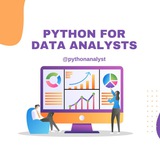tg-me.com/pythonanalyst/976
Last Update:
Common Mistakes Data Analysts Must Avoid ⚠️📊
Even experienced analysts can fall into these traps. Avoid these mistakes to ensure accurate, impactful analysis!
1️⃣ Ignoring Data Cleaning 🧹
Messy data leads to misleading insights. Always check for missing values, duplicates, and inconsistencies before analysis.
2️⃣ Relying Only on Averages 📉
Averages hide variability. Always check median, percentiles, and distributions for a complete picture.
3️⃣ Confusing Correlation with Causation 🔗
Just because two things move together doesn’t mean one causes the other. Validate assumptions before making decisions.
4️⃣ Overcomplicating Visualizations 🎨
Too many colors, labels, or complex charts confuse your audience. Keep it simple, clear, and focused on key takeaways.
5️⃣ Not Understanding Business Context 🎯
Data without context is meaningless. Always ask: "What problem are we solving?" before diving into numbers.
6️⃣ Ignoring Outliers Without Investigation 🔍
Outliers can signal errors or valuable insights. Always analyze why they exist before deciding to remove them.
7️⃣ Using Small Sample Sizes ⚠️
Drawing conclusions from too little data leads to unreliable insights. Ensure your sample size is statistically significant.
8️⃣ Failing to Communicate Insights Clearly 🗣️
Great analysis means nothing if stakeholders don’t understand it. Tell a story with data—don’t just dump numbers.
9️⃣ Not Keeping Up with Industry Trends 🚀
Data tools and techniques evolve fast. Keep learning SQL, Python, Power BI, Tableau, and machine learning basics.
Avoid these mistakes, and you’ll stand out as a reliable data analyst!
Share with credits: https://www.tg-me.com/sqlspecialist
Hope it helps :)
BY Python for Data Analysts
Warning: Undefined variable $i in /var/www/tg-me/post.php on line 283
Share with your friend now:
tg-me.com/pythonanalyst/976
